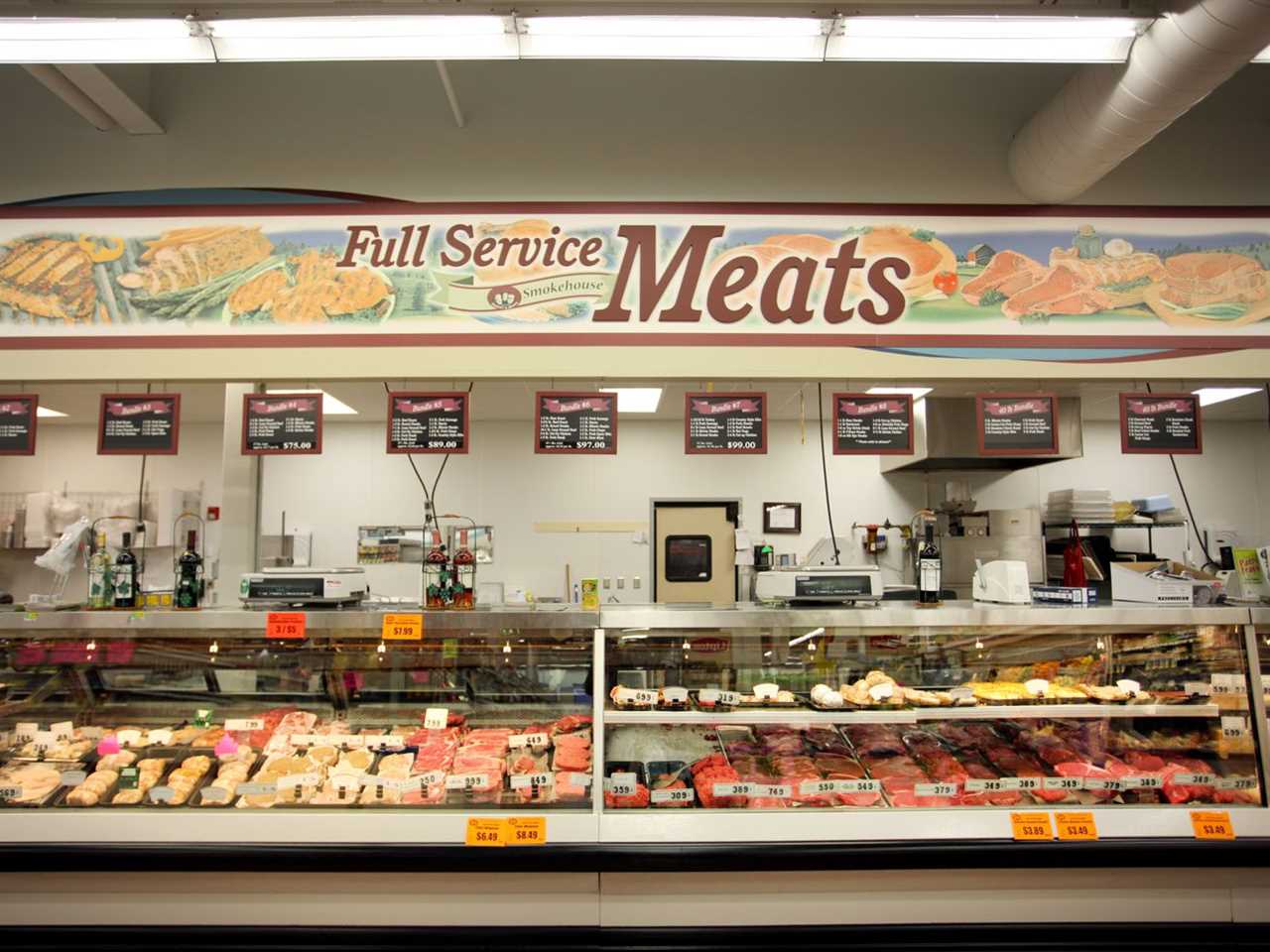
From farm to plate, one in four animals raised on factory farms are wasted.
Almost 1 in every 4 animals raised on a factory farm never actually makes it to your plate. Instead, they die for nothing. That’s according to a study published earlier this month in the journal Sustainable Production and Consumption that sheds new light on the global toll of food waste on animals.
Researchers at Leiden University in the Netherlands found that in 2019, 18 billion of the 75 billion pigs, chickens, turkeys, cows, goats, and sheep raised for food around the world were never eaten. The study counted animals wasted at any point in the supply chain: those who died prematurely on the farm or on the way to the slaughterhouse; wasted in processing; and by restaurants, grocers, and consumers. (The study, however, did not include wasted seafood, which would likely account for hundreds of billions of fish and shrimp.)
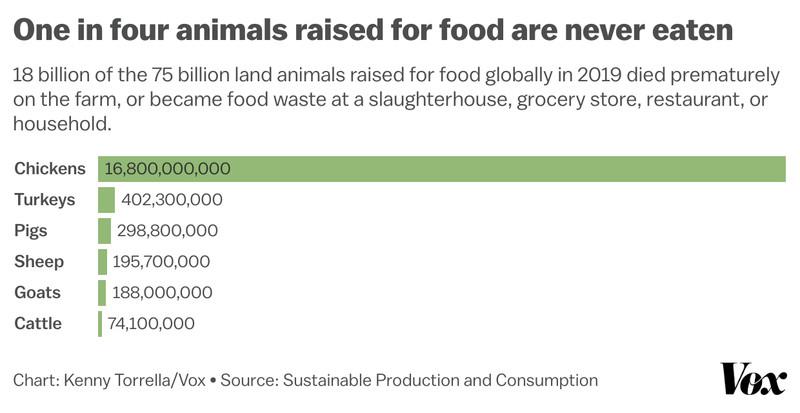
A majority of the waste occurs in just 10 countries — most of them large and high- or middle-income nations, like China, the US, and Brazil. The researchers also noted how many animal lives were wasted per capita, a metric on which the US scores especially poorly: 7.1 animals wasted for each person. That’s about triple the global average of 2.4 animals per person.
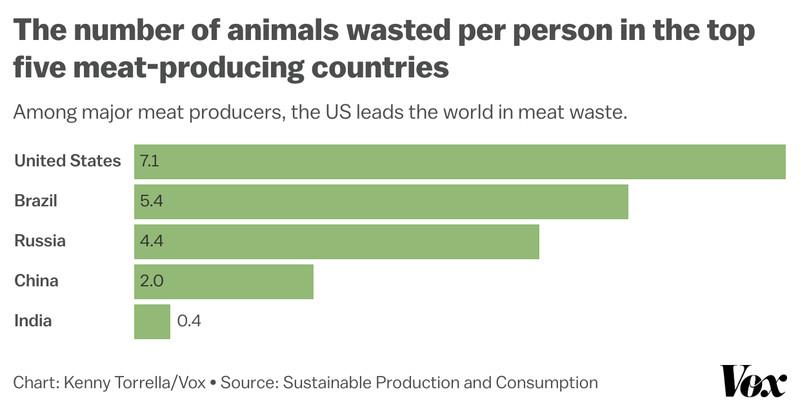
“This study gives the first comprehensive understanding of the extent of the problem,” the study authors wrote, noting that “creating awareness among policymakers and consumers that [food loss and waste] comes with such vast consequences” for animals could spur action on the issue.
At a United Nations general assembly in 2015, world leaders committed to cutting food waste in half by 2030, but the problem is expected to worsen globally. US food waste has increased in recent years.
Food waste is often thought of as just a food security issue — many people go hungry, and diverting edible food to those in need can prevent hunger and malnutrition. But it’s also a major environmental challenge. Food and agriculture account for around one-third of global greenhouse gas emissions, so every bite of food that’s lost or wasted represents carbon emissions spewed into the atmosphere that didn’t need to be. And when food ends up in landfills, it generates methane, a highly potent greenhouse gas. All told, six percent of global greenhouse gas emissions stem from food waste. Wasting meat is especially bad for the environment, since it has a much higher carbon footprint than plant-based foods.
Food waste reduction could be an important tool in mitigating the number of animals churned through the factory farm system — and its immense environmental and ethical toll. We hear a lot about the importance of eating less meat for animals and the environment, but I think it’s time for an additional slogan to enter the conversation: Waste less meat.
Preventing food waste on the farm
In North America, about a quarter of meat waste occurs on the farm, with around 1.5 million animals dying prematurely every day from disease and injury.
The biggest opportunity to bring that number down is by making reforms to the chicken industry, simply because of its scale. Over 5 percent of the 9.3 billion chickens raised for meat in the US — around 500 million chickens — die on the farm. Changing how they’re bred could make a big difference.
Nearly all the chickens raised for food in the US come from a handful of breeds that grow incredibly large, incredibly fast, which not only means the birds are in constant pain, but it can also lead to leg deformities and other health issues that cause premature death, like heart attacks and starvation or dehydration due to the inability to walk and get feed and water.

Zuidhof, MJ, et al. 2014 Poultry Science 93 :1–13/Numbers added by Vox
“Slower-growing breeds usually are more robust and have lower mortality figures,” Ingrid de Jong, a senior scientific researcher of poultry behavior and welfare at Wageningen Livestock Research in the Netherlands, told Vox over email.
For the animals that survive the farm, millions of them will die on the way to the slaughterhouse, accounting for around 7 percent of meat waste in North America. Animals are overcrowded into trucks, which can cause life-ending injuries, as can exposure to weather extremes on the road. Under the federal “28-hour law,” these trucks can move farmed animals across state lines for 28 consecutive hours without having to unload them for rest, water, or food. As bad as that is, the law is weakly enforced by federal agencies and exempts poultry, according to Dena Jones of the nonprofit Animal Welfare Institute.
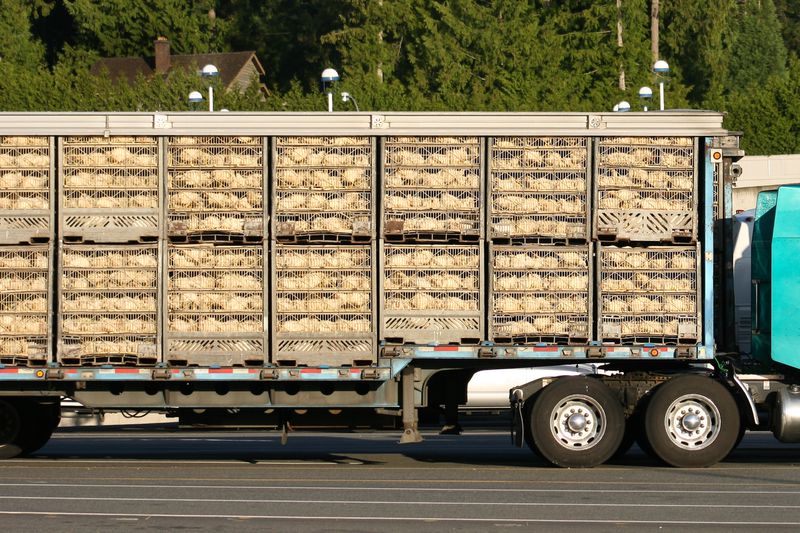
Getty Images/iStockphoto
Jones reviewed USDA records and found one cold-related transport incident from poultry company Pilgrim’s Pride that resulted in the death of more than 34,000 birds — the largest she had ever seen. “Because so many birds are raised for meat in the US — and the life of a single bird has almost no value to the industry — even 34,000 is viewed as inconsequential,” Jones told Vox over email.
Preventing food waste in the store and in the factory
Grocery stores, restaurants, and food manufacturers can also do a lot to reduce food waste.
Standardizing expiration labels on foods bought at the grocery store — which is done by retailers and manufacturers — would go a long way to reduce consumer confusion and waste. Harvard’s Food Law and Policy Clinic advocates for federal legislation requiring manufacturers that choose to slap a date on food labels for quality reasons to use the phrase “best if used by,” and reserve “expires on” for more high-risk foods.
Dana Gunders, executive director of food waste nonprofit ReFED, says getting food companies to use new technologies that more accurately predict consumer demand would help prevent surplus purchasing. Passing laws that ban food from entering landfills would be a big lever for change too, and nine states and several municipalities have put in place such policies to varying degrees. This incentivizes businesses to donate more unsold food and work harder to prevent waste.
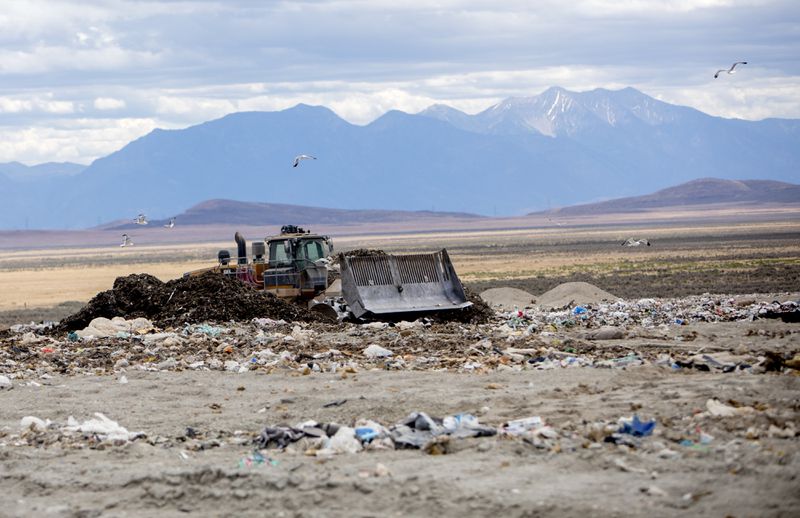
Getty Images/Bloomberg Creative
Grocers can also make simple in-store changes to reduce meat waste. Claudia Fabiano, an environmental protection specialist on food waste at the US Environmental Protection Agency, told Vox there’s one thing grocers could do to reduce seafood waste specifically. “We are so used to seeing these decadent displays of seafood on ice, but that seafood was generally shipped frozen and is just sitting there and defrosting,” she said. “So once you buy it that way, you do not have very long to consume that fish.” The solution? Selling more seafood frozen, which would make it last longer.
All told, grocery stores account for around 13 percent of meat waste. But an even higher share occurs at the slaughtering and processing stage.
Bruce Taylor, a chemical engineer and the president of food waste consultancy Enviro-Stewards, chalks up a lot of food waste in slaughter and processing facilities to sheer inertia. Employees become used to inefficient processes and faulty machinery, and it can take an objective observer — him, in this example — to come in and notice waste, put a dollar value on it, and suggest small engineering changes that can save companies money and improve efficiency. In one example, his employees at a lobster processing factory pulled what was left off each lobster at the end of the processing line, which amounted to around $350,000 a year of edible meat being wasted.
“Everyone can see what’s happening, they just don’t know what it’s costing them,” he said.
How to waste less meat at home
Cutting meat waste on the farm and at the factory are the most important steps, but reducing it at restaurants and at home is also critical because combined, they account for around one-third of the problem in North America. And once food has reached the consumer, emissions from production, processing, packaging, and shipping are baked into the product.
WRAP, an environmental nonprofit based in the UK, found that when British households reduced food and drink waste 21 percent from 2007 to 2012, they also purchased less food and drink.
“Reducing the amount of food people in the UK waste in their homes appears to have had a knock-on effect in reducing the amount of food people need to purchase,” Tom Quested, lead analyst at WRAP, told Vox over email. “Furthermore, research focusing on the EU suggests that this effect could ripple all the way up the supply chain, reducing the amount of food we need to grow.”
So how can you waste less meat and other animal products? Understand when your food will actually go bad, use your freezer liberally, and plan ahead.
“A lot of people think their food is bad when it’s actually still perfectly good to eat,” said Gunders. “The dates on food are really an indicator of when something is of top quality or it’s freshest, but they’re not telling you the food is bad or that you can’t eat it.”
Her general rule of thumb? “If it looks fine, smells fine, and tastes fine, it’s okay to eat.” She encourages readers to visit SaveTheFood.com, a consumer guide from environmental nonprofit Natural Resources Defense Council, for more information. (I also recommend this backgrounder on sell-by and best-by dates.)
Can’t eat it soon? Put it in the freezer. “Freezers are a magic pause button,” Gunders said.
“A lot of people are in the habit of freezing meat but you can freeze milk if you’re going away on vacation — it may separate a little but it’ll be okay. Eggs you can freeze if you crack them out of their shell and scramble them but don’t cook them.” When it comes to cheese, it’s best to shred it before freezing and then use it in cooking after thawing.
Lastly, plan ahead. “If you can, sketch out an accurate plan of your week and when you’ll eat at home, and have that in mind when you’re shopping,” Gunders said. “That’s really critical because shopping is where you commit to the food regardless of whether you eat it or not.”
Update, December 12, 2023: This story was originally published in January 2022 and has been updated to reflect new research on the global toll of food waste on animals.
----------------------------------------
By: Kenny Torrella
Title: We raise 18 billion animals a year to die — and then we don’t even eat them
Sourced From: www.vox.com/future-perfect/22890292/food-waste-meat-dairy-eggs-milk-animal-welfare
Published Date: Tue, 12 Dec 2023 12:45:03 +0000
Did you miss our previous article...
https://consumernewsnetwork.com/politics-us/trump-secures-massive-slate-of-mississippi-gop-endorsements






